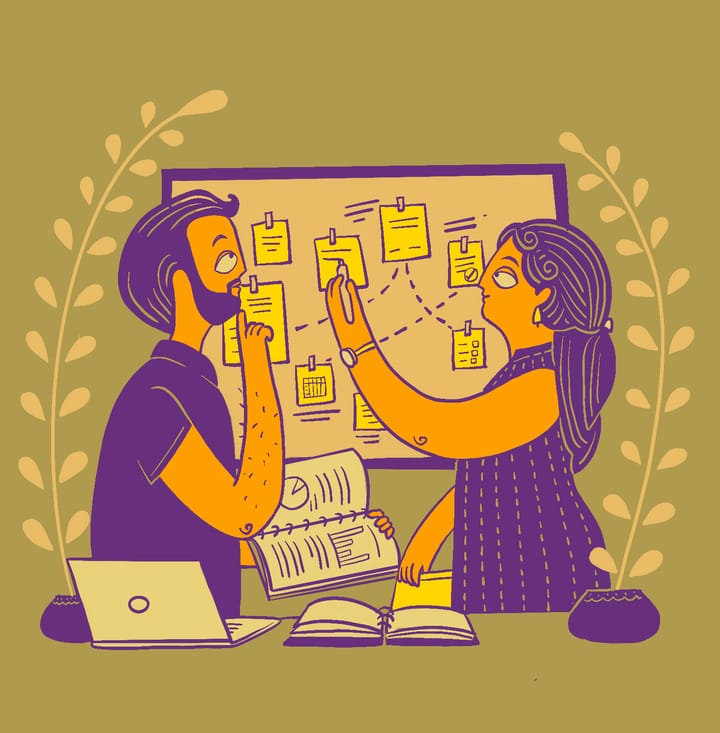A Guide to Mindful Leadership and its Benefits
These mindfulness practices will take your focus and emotional health to the next level.

One of the most commonly-prescribed antidotes for surviving in today’s stress-wracked world is mindfulness. Mindfulness is especially important for leaders in every sphere, because it prevents them from getting drained from the constant stress and decision-making that comes with their job. In this article we will be sharing with you the benefits of becoming a more mindful leader and how you can go about becoming one.
How stress affects leaders’ mental health and efficacy at work
If not managed, prolonged stress affects our health, mood, and productivity at work. People with chronic stress can develop physical, emotional and behavioural symptoms like anxiety, irritability, depression, panic attacks, burnout, etc.
When leaders are not mindful about their thought patterns and ways of dealing with stress, it can impact organisations heavily. Such leaders might become reactive (instead of responsive), irritable, burnt out, risk-averse, or close-minded. Their self-confidence might also drop. All of these can have serious consequences for their teams and employers.
What organisations need today are leaders who have the ability to tune out noise and immerse themselves into the present priorities. Author Bill George says, “If you’re fully present on the job, you will be a more effective leader, you will make better decisions and you will work better with other people”.

What does mindful leadership mean?
Are you a reactive or responsive leader? To understand the difference, take the last crisis you handled, and reflect on how you acted in the situation. Did you notice a pattern? Did you completely understand the situation before acting on it? Were you driven by feelings of fear, urgency or hurry, or did you approach it with a sense of calm and confidence?
Leaders have to relentlessly prioritise; a big part of their job is deciding which situations deserve all their attention. To quote an example, Ryan Napierski, president of Nu Skin, says that when he is working out, his attention is solely on it. Similarly, when he is surfing, he isn’t thinking of the next quarter’s numbers. And it’s worked for him: “These activities force me to have a single focus on what I’m doing right now. . . . So, when I am at the office, I can focus my efforts to be more productive and to be direct and decisive in my work.”
Benefits of mindfulness for leaders
Mindfulness is a very valuable tool for leaders. Here are some of the noted benefits of mindfulness at work:
- Better focus
According to Janice Marturano, founder of the Institute for Mindful Leadership, employees are “.... encouraged in the workplace to be attached to an array of technology wizardry 24-7,”. Being mindful helps you to declutter your mind while approaching the task at hand. This increases your focus and helps you to give it your best. - Better team
Being mindful and aware of your strengths and weaknesses helps you create the right team and nurture it. Knowing your weaknesses should help you to find people who are good at that particular skill. - Better relationships
Once you have a great team, it is time to lead. A great leader is able to empathise and connect with their teammates, while helping them grow. Being mindful and learning how to be a good listener/observer helps you in this. - Better creativity
As a leader or employee, it is important to be creative in your problem solving. Trial and experimentation are the signs of a thriving organisation. Being mindful helps leaders be confident in their work and approach it with creativity. This sentiment flows down to teammates and helps build a culture and team to be proud of.

5. Better employee engagement
Author Patrick Hyland in his article “Mindfulness at Work: A New Approach to Improving Individual and Organizational Performance” , writes ‘mindfulness programs may enable organizations to foster employee engagement and commitment – especially in the case of high-stress and high-burnout jobs’. When leaders and employees can see the bigger picture of their actions, employee satisfaction has been observed to go up, while attrition comes down.
6. Better handling of stress
According to the US-based National Institute for Occupational Safety and Health, 26% of workers are ‘often or very often stressed at their work’. But, very often, people are not stressed because of things that are happening in the moment; they are usually overthinking the past or worrying about things to come. Being mindful lets you detach yourself from these stressors and work on the problem at hand.
Being mindful doesn’t just affect you, but also your teammates. And hence mindful leadership makes it more than just dealing with one particular situation, but rather creates a workforce that is more efficient, productive and happy.

Mindfulness practices followed by global CEOs and leaders
It is one thing to understand the theoretical aspect of mindfulness and its benefits, but how do you start practising it? While different things work for different people, here are some practices that work for these leaders.
- Clear your head
Give yourself time daily to try to detach yourself from the continuous grind through yoga, meditation or any other mindfulness practice. Bobby Figueroa, CEO of Gradient, believes “As a CEO, you’re under a constant barrage of urgencies, perceived and real. Being mindful is my superpower for making better decisions in those moments,” - Breath of life
Breathing is perhaps the most accessible and effective mindfulness practice that you can start. Just remember the abbreviation S.T.O.P, which stands for Stop; Take a breath; Observe; and Proceed. Give yourself time and space at work to stop, detach from distractions and just breathe for a few minutes. Observe your breath and focus your attention only on ‘inhaling, exhaling, inhaling, exhaling..’. Sit up straight and observe just your breath and then continue with your tasks. - Time to recharge
Nirav Shah, CEO of Sentinel Healthcare has a policy of ‘no screens on Saturday’. She says it allows her much needed time to recharge and spend time with her family, which allows her to come back on Mondays refreshed and with better insights. It is important to recharge yourself periodically when you operate in such a high functioning environment. - Work the body, ease the mind
One of the easiest ways to detach from a task is to exercise or play a sport. Scott Smith, CEO of CloudApp, says “Exercise is generally one of the first areas that’s forgotten when you start to get into a really high-stakes, emergency, or high-effort zone. You need to be able to step back and remember to take care of your physical self,”. - Restrict distractions
Another practice that helps a lot of leaders is to limit the distractions when focussing on a task. Disabling your pop-up notifications, replying to emails in a particular window or picking up a task only after finishing the former are all ways to start practicing this.
Besides these mindfulness practices for leaders, you can also find heaps more online. The real objective is to start building a habit of being mindful through whatever practice you choose. And while they may not turn you into a mindful leader overnight, with consistent effort, you should start experiencing the benefits really soon.



